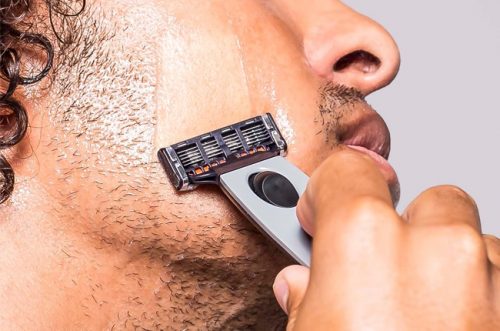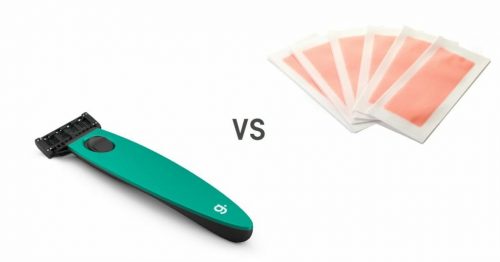Razor burn (a.k.a razor bumps/shaving rash) – it’s painful, it’s annoying, and it certainly isn’t pretty. We’ve all been there; that itchy feeling that comes lurking a couple of hours after shaving, all nicely topped off with a red bumpy rash. Brilliant.
But why do we get razor burn in the first place? Well, shaving can be pretty tough on your face, and razor burn crops up when the skin gets irritated with hair follicles being twisted and tugged by your razor. Anyone can get razor burn, but if your skin is generally quite sensitive you’re unsurprisingly much more likely to suffer with the issue.
If you’re a regular victim of the dreaded burn it can be tempting to stop shaving altogether – but it doesn’t have to be this way! Of course we love a good beard, but you shouldn’t feel forced into sporting the gruff look simply because your face isn’t keen on shaving. A few small changes to your shaving routine can help to leave your skin silky smooth and burn free.
Prepare your face:
The first step to preventing razor burn is to make sure your face is properly prepared for shaving. You’ll want the hairs to be nice and soft in order to minimise any tugging. Steam is brilliant for this, so the best time to shave is right after a hot shower. Use an exfoliating face wash to get rid of any dead skin cells, this gives you a smooth surface to work with and brings any potential ingrown hairs out of hiding.
Keep your blades in check:
Unsurprisingly, when it comes to shave irritation and razor burn, it’s your razor that’s often the main culprit. Imagine cutting a tomato with a blunt knife – instead of a clean slice you end up with torn skin and a lot of mess. It’s the same principle with your face when you use a blunt razor; your hairs are tugged and torn which can damage the skin.
Make sure you’re changing your blades regularly to keep your shave as tug-free as possible. We’d recommend a new blade each week if you’re a regular shaver, or fortnightly if you don’t do it so often.
It’s easy for grime and bacteria to build up on your blade, which is another big cause of irritation, particularly if you have sensitive skin. Giving your razor a good rinse with hot water after each shave (making sure there are no hairs lurking in the blades) helps to prevent grimy build up. Dry your razor with a towel (please be careful not to cut yourself) and store it somewhere it isn’t going to get wet.
Reduce the friction:
Keep your glide icy smooth by always using a good quality shave gel/cream. Try and avoid products with harsh chemicals (like parabens and petrochemicals) or artificial fragrances. These have a tendency to upset the skin, which adds further fuel to the fire (pardon the pun). Let the product sit for a minute before you start shaving to really soften the hair. We’re trying to keep any friction to a minimum here, so go easy on the pressure and use light, short strokes in the direction that the hair naturally grows.
Post shave care:
You’ve just finished scraping a sharp blade across your face, so naturally, your skin is going to be in need of a bit of TLC. Give your face a good rinse with cool water to remove any excess shave product and close up your pores. Using a soothing post shave tonic can also help to soothe and tighten the skin. Finish things up with a gentle light moisturiser – this will work to repair the skin and reduce any redness. If you want to avoid having a Kevin Mcallister moment, it might be best to stay away from aftershave/cologne.



